Tonight Microsoft first showcased its next iteration of the Windows operating system. But to the surprise of many was not named either Windows 8.2 or Windows 9 Company leapfrog both numbers and go straight to Windows 10, change of name indicates that this is the tenth version of the operating system, while the number naturally enough distance themselves a great deal of the eight ball – which has received mixed reception.
Windows 10 is the next major version of Windows, and the company describes it although significant:
– Windows 10 represents the first step for a brand new Windows generation. This will be our most comprehensive operating system and the best launch Microsoft has done for corporate clients ever, says Terry Myerson, vice president of the group’s operating system to Microsoft, in a statement.
A bit like Windows 7
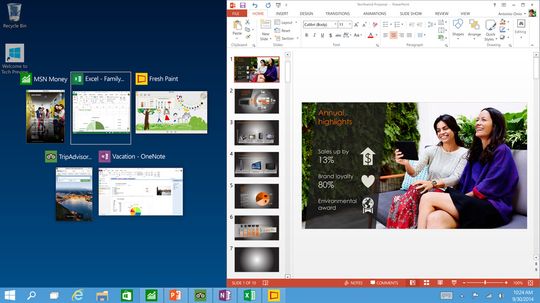
Myerson is also the person who presented the new operating system for a small handful of American journalists tonight. From what we have seen, the operating system can deliver so far, it all looks very exciting.
In many ways, Microsoft is now a solid step forward, actually by looking up a bit in the rearview mirror. Windows 10 brings with it many of the popular capabilities of Windows 7, and mixes it with popular solutions in Windows 8 – while some of the most controversial features either removed or corrected.
The reason is simple. There are still many who are using Windows 7, an operating system that will soon be retired. Microsoft will get all these users of Windows 10 and they will do it with such an easy learning curve as possible. For this reason, there are many similarities between the two systems, while the core of it all is Windows 8 is just not visible.
– There is practically no learning curve for Windows 10 , alleges Jim alcove Microsoft in a blog post.
Start menu returns
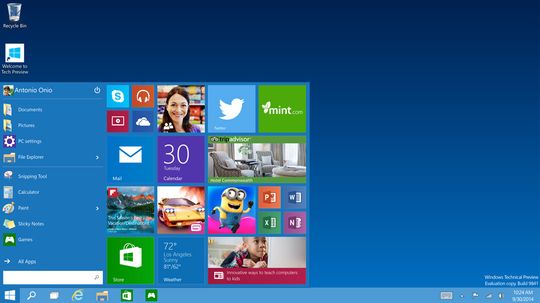
One of the most anticipated features since Windows 8 has been the familiar Start menu. Microsoft has already promised us that it will come back, and it makes the final with Windows 10 – a slightly upgraded version.
Start menu is basically just that you remember that – one overview of commonly used applications, with a dedicated button that takes you to a list of all the programs on your computer.
This section is only one half of the new start menu. To the right you will find a variety of tiles, which are the icons for various apps, programs and websites. The size of these you can edit yourself, and the point is, as we understand that this grid largely replace the whole home screen you’ll find in Windows 8 today.
It seems, in other words that Microsoft draws some On some of the features they introduced with Windows 8, which at the time was hailed as significant and large. This leads us to the next new operating system, which is that you no longer should feel like you’re in two different worlds.
Apps running as programs
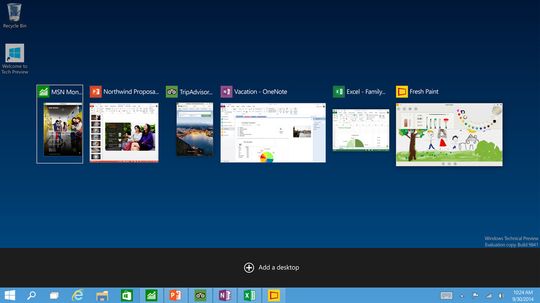
In Windows 8 there namely so that a new app happily opened up in a different interface than a traditional program does. This dichotomy Microsoft will now get rid of, so the experience will be similar across.
With Windows 10 will apps from Windows Store open in the same format as traditional desktop applications. They can also be treated in the same way, in that you can resize them and move them around the screen, minimize them to the starting line and the like.
Snap functionality, which allows you to attach a window to one part of the screen refreshed also up. You may include attaching up to four apps in one screen, while the operating system will constantly propose new programs to retrieve and “snatch” in empty rooms.
A new button called “Task View” is also in place. Click this, you will see a list on the screen that shows you all the applications you run, so you can easily navigate between them. The overview is the same one you get when you press alt + tab, but the interface reminds Now a little more about Apple’s OS X operating system.
Another novelty that OS X has been known for a long time, is that Windows will now have ability to run multiple independent desktop simultaneously. Via Task View, you can create these virtual desktops, and thus distinguish groups of programs with different desktop – for example, one group for job applications and another for private purposes.
on any platform
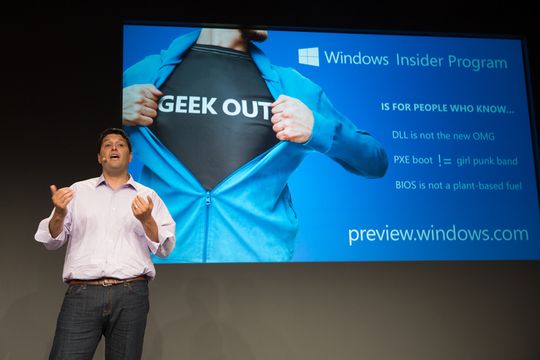
Microsoft has also been working on how the operating system to switch between being friendly touch screen or mouse and keyboard, which has a nut before – especially on hybrid machines. With a new feature they call “Continuum” will now be easier to do this exchange between touch-and non-touch environments. It happens when you receive a prompt to switch each time you disconnect or a keyboard, and if you change the menus, programs, and buttons to adjust accordingly.
– We are building a bridge over gap between berøringsoptimaliserte devices and mouse and tastaturoptimaliserte devices, enter the alcove.
The sum of all the news is much of the reason that Windows 10 will run on virtually any digital gadgets – from phones to PCs , not to mention the game console Xbox. In fact, claims Microsoft that even tiny “Internet of Things” devices to run Windows 10.
Coming late next year
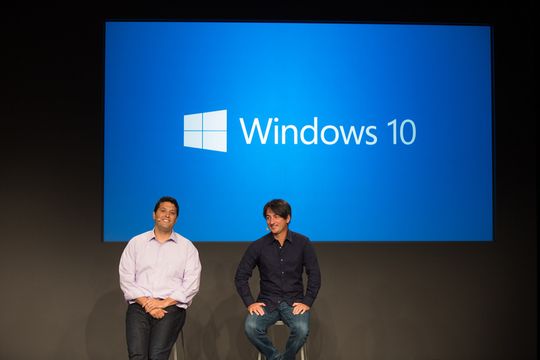
As early as tomorrow night, the first users to access a very early version of Windows 10 This advance practice, however, is reserved for developers and individual enthusiasts, Microsoft has been clear that Issue the release tomorrow is going to be a very early version.
It means that all functions probably is not in place, and that it probably is going to be full of imperfections – something that must expect of an operating system that is one year from the final launch.
For it is only in late 2015 that everyone gets the opportunity to upgrade to Windows 10
Much is still unknown about Windows 10, but Microsoft promises that they will be sharing even more details early next year. In April, the company will hold its annual developer conference, and then we’ll probably know more.
“Internet of Things” is predicted a bright future:
This does it, and so will the processor giant Intel make it a reality “
No comments:
Post a Comment